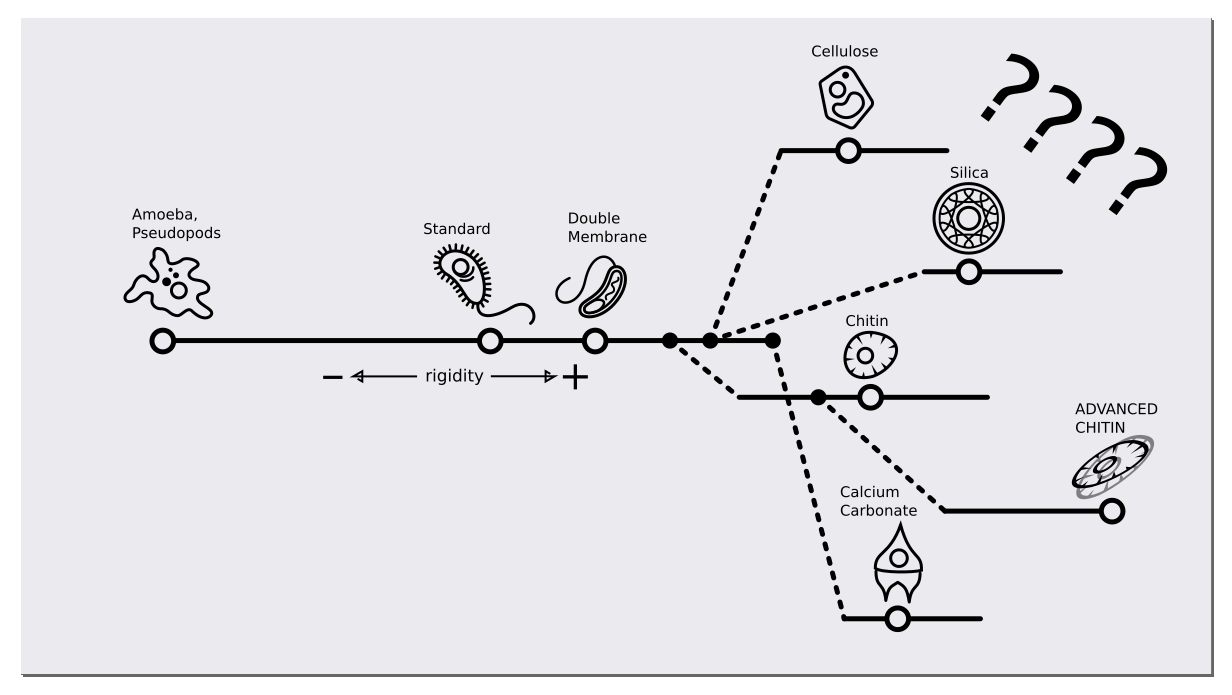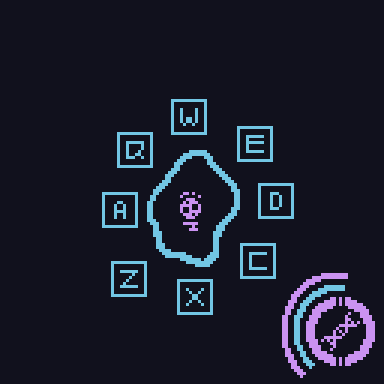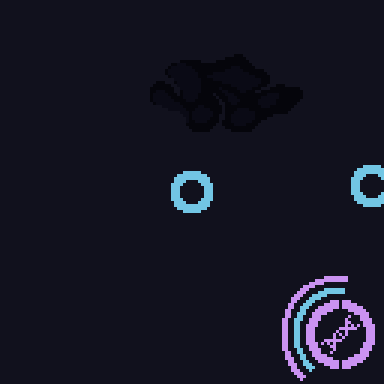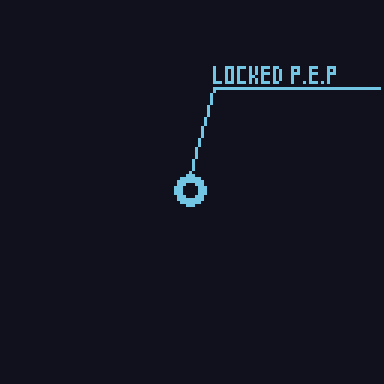My main concern is how psuedopods will function. once a certain point is reached when it comes to the rigidity of your cell. How will your cell move? Currently the standart rigidity results in a fairly stagnant cell body which doesnt move and spread out much (which im assuming will change later on throughout the games development). this makes it so your cell appears fairly uniform and locomotion is quite simple as it just looks like your cell is merely swimming.
However. pseudopodia seem to be much less intuitive as in real life they are usually quite spread out giving them quite alot of variation in shape. How would this type of locomotion work? and where would the camera be centered at? would pressing the directional keys create a ‘current’ inside your cell pushing out numerous pseudopods? it seems far more convoluted than the much more conventional form of locomotion.
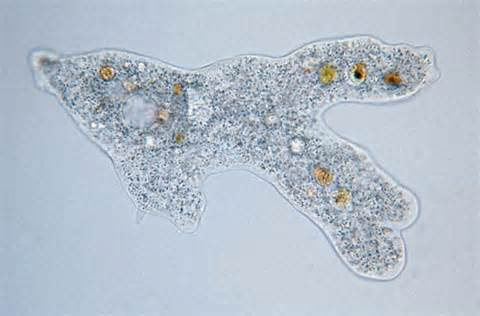
EDIT:
Omnicron pointed out to me that amoeba movement will most likely be like QWOP/mount your friends. with pseudopodia capable of being activated and moved. Having the controls of the game suddenly switch from simple directional keyboard movement to qwop seems like a bit of a drastic measure and would probably disrupt the flow of the game for a while as the player gets used to the new controls. not to mention the fact that this would be quite hard to get used to making what should be a simple and easy to understand evolution simulator into another octodad/i am bread. simpler more ergonomic controls which should probably remain fairly constant throughout the game seems much more simpler and easier to develop.
So currently it appears that unlocking organelles will be based on engulfing bacteria which are capable of certain tasks.
for eg: chloroplasts will be obtained by engulfing and forming a symbiotic relationship between photosynthetic bacteria. judging from the dev forums it appears unlocking organelles will be based purely on RNG. by this i mean there is a small percentage where engulfing a bacteria will unlock the organelle. this while certainly fairly realistic, makes it so that casual players will probably not be able to know to engulf bacteria to unlock organelles.
There are a few issues i see with this RNG based unlocking of organelles:
-
Unless there is implementation of a guide which tells the player how to unlock organelles, there is a low chance they will naturally encounter this if the percentage is fairly low.
-
People attempting to 100% the cell stage will usually have to grind in order to unlock all the organelles they require. difficulty is fun and all, but there will always be a certain point where it is not difficult but instead grindy.
-
Unlike spore. which granted a new body part every time a species with that body part died. Thrive relies on chance making it unreliable and undependable.
What im basically attempting to say is that using RNG to determine whether you do or dont unlock an organelle will be a tricky thing to manage. setting the percentage too high will make the game quite easy, and setting it too low will make it too grindy. there will need to be constant tweaking to find an equillibrium. which is why i believe that there should be special bacteria which unlock organelles.
what do i mean by this? well. Unlike using RNG. the special bacteria will actually look unique and different from its companions giving players an incentive to investigate. this can easily be done by outlining the bacteria in bold yellow or some other visual effects. Once this special bacteria is engulfed the player will hear a special sfx and a pop-up will appear and show that they have unlocked a certain organelle.
Why would this design be better? lets compare it.
-
Special bacteria looks special. no need for immersion breaking tutorials/walls of test. there will already be an incentive to investigate the bacteria and once the player engulfs and reads the popup they will understand that these Special bacteria are key to unlocking organelles.
-
people attempting to 100% the cell stage may or may not find this new method more time consuming. however, unlike the previous method. this current method gives them a goal/destination they must reach (the special bacteria) and does not force them to blindly chase and absorb bacteria for a chance to unlock an organelle.
-
The special visual cue’s will basically make it so you know what bacteria will 100% give you the unlock.
so where would these special bacteria be found? will they be frozen in place littered around the world like spores meteorites?
well. really they’re just like shiny pokemon. they’re basically exactly the same as normal bacteria except for the fact that they have a special visual cue and unlock organelles. they still act the same way as any other bacteria of the same species.
Increasing or decreasing the difficulty of the game would also dictate how many of these shiny bacteria spawn. a harder game will result in less shiny bacteria being spawned. and an easier game will result in more shiny bacteria being spawned.
Here is a concept animation/gif of my idea: (a mitocondrion like cell is being engulfed)
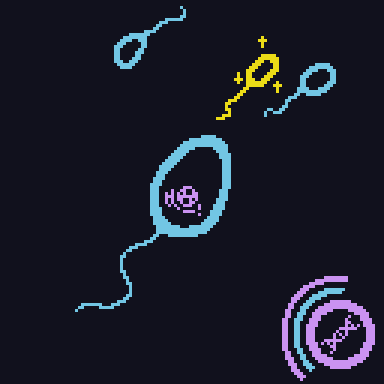
Now im not sure if this idea has been brushed upon previously. but i think that organelles. (eukaryotic organelles which originate from bacteria) should be able to be upgraded. this is mainly due to the fact that if we look at it realistically; the bacteria Symbiant wouldn’t have been perfectly specialized as soon as it was engulfed. these organelles would’ve had to evolve along side the host cell.
Other things would be evolutionary pathways for the organelles.
for eg: pili in thrive are an extremely diverse group of organelles which can be broadly described as “stabby sticks” they can be used for predation, genetic sharing, and a plethora of other things. ive never seen people go much in depth when talking about pili and so i would like to give my breif ideas of a pili ‘skill’ tree.
membrane pilus
allows you to stick on surfaces.
Predatory pilus
simple as it can be. this pilus stabs other creatures
by spending Mutation points. predatory pilus is able to evolve into:
(you will be able to unlock these once you place a predatory pilus down and spend MP on evolving the pilus)
Injector pilus
a much stronger varient of the predatory pilus mroe specialized and capable of injecting prey with harmful agents.
sexual pilus
you are able to perform genetic swapping increasing your mutationpoints
this idea is merely a daydream so it hasnt really been thought about much.
